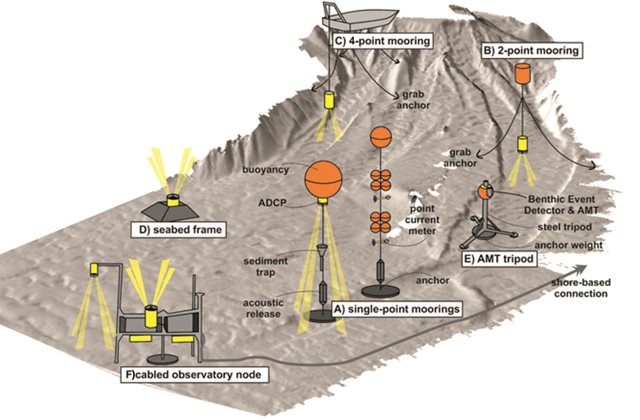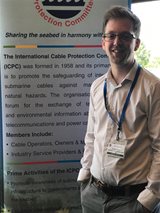SUT US – The First Source to Sink Measurements of Turbidity Currents: New Insights for Seafloor Infrastructure
04 November, 2021

Powerful avalanches of sediment, known as turbidity currents, sculpt deep submarine canyons and create the largest sediment accumulations on our planet. Such flows can travel at fast speeds (up to 20 m/s), over thousands of kilometres, transporting vast quantities of sediment, organic carbon and pollutants to the deep sea. Their powerful nature means that these flows can damage important seafloor infrastructure, such as cables and pipelines, as well as sensors placed in their path to measure them. We have therefore largely had to rely upon the deposits these flows left behind, or scaled-down laboratory experiments, to infer their behaviour. However, the past few years have seen an explosion in direct measurement of turbidity currents, including the first source (river) to sink (deep sea fan) field campaigns, which is transforming our understanding of these dynamic deep sea events.
This presentation will highlight some of the novel and emerging technologies used to successfully monitor turbidity currents in a range of systems worldwide by a large international collaboration, shed new light on their field-scale behaviour, and share lessons learned from recent instances of infrastructure-damaging flows, such as the recent 1200 km runout flow in the deep-water Congo Canyon that damaged multiple seafloor cables during the 2020 COVID-19 lockdown.
About the presenter:
 Dr Mike Clare, Principal Researcher in Marine Geohazards, National Oceanography Centre, UK
Dr Mike Clare, Principal Researcher in Marine Geohazards, National Oceanography Centre, UK
Dr. Clare leads the Marine Geosystems research group at the National Oceanography Centre. He has published >60 peer-reviewed papers focused on sediment and pollutant transport, offshore hazards, and application of novel monitoring techniques to assess threats to coastal communities and seafloor infrastructure. His research tackles questions such as the implications of future climate change for natural hazards, how new technology can be used to make direct measurements of powerful seafloor hazards, and monitoring deep-sea pollution. He formerly worked at Fugro as an engineering geology and geohazards consultant, and is currently the Marine Environmental Advisor to the International Cable Protection Committee. He regularly provides expert advice to a range of offshore infrastructure industries and policy-makers about threats posed by offshore natural hazards and environmental interactions with seafloor infrastructure.
For more information and to book your place please click here.
Image Source: https://sp.lyellcollection.org/content/500/1/605.abstract